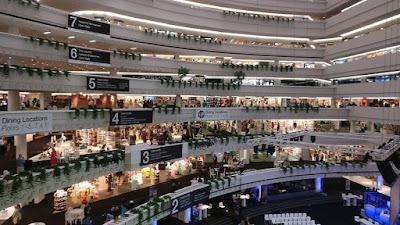Houseware Fair : EPCH
Embroidery Article Exporters Gracing Indian
Houseware Fairs with Magnificent Collection
The handicraft
exporters of India use Indian housewaresfair to display the wonderful creations of Indian artisans. The
distinctiveness of cultures, customs and religions also reflects through the
diverseness of Indian handicraft. The Indian embroidery article exporters use the housewares fair to bring this
colorful diversity in front of the global customers. The collectors can find
fabric-based utilitarian items with unique embroidery patterns in this fair.
Manipuri Embroidery
The artisans of
this North-Eastern state use eight different embroidery patterns to design
cloths. They use this embroidery pattern to design attires, wall-hangings and a
variety of home furnishings.
·
The
Shamilami embroidery uses threads of
vibrant colors to create patterns of wild animals. The Kings used to gift the
clothes with Shamilami to the warriors as a sign of gratitude.
·
The
Maibung embroidery takes inspiration
from nature. The artisans create lovely bedspreads with Maibung. The chocolate,
maroon, green and blue are four basic thread-colors.
·
The
unique embroidery pattern of Meithei community is known as Tindogbi. This unique embroidery depicts silkworms’ movements.
·
The
continuous stitching style of Hijay
embroidery creates circular patterns and running lines. The use of pink, white
and black threads is common in Hijay embroidery.
·
The
Ayobi embroidery links one circular
pattern to another and creates unique serpent-like motifs.
·
The
craftswomen of Manipur use Abhala
embroidery to adorn Manipuri costumes for Ras festival with mirrors.
Kashmir’s
Embroidery
Kashmir is the
‘Heaven on Earth’ with ‘Meadow of Flowers’. The embroidered patterns of Jammu
and Kashmir also depict Kashmir’s natural beauty with birds, flowers and Chinar
trees.
·
The
Kashida embroidery uses single-stitch
style to create colorful and intricate designs. The craftsmen use this
embroidery pattern to design attires, carpets
& rugs.
·
The
thin needles of Sozni embroidery
create intricate and uniform motifs on both sides of attires.
·
The
artisans use chain stitch with a hook and create flowing motifs of Zalakdozi embroidery on rugs/cloaks.
·
The
double-sided stitching pattern of Do-Rookha
embroidery creates same motifs on each side of a cloth. The craftsmen use
different color combinations to create these designs. They combine chain stitch
with appliqué to adorn Kashmiri Gabbas’
with intricate designs.
·
The
Samovar pattern mimics the shape of antique Kashmiri teapot. It uses the
intricate designs of flowers, leaves and twigs.
·
The
artisans use the dense craftwork of Kashir-jaal
and Jaama embroideries on the
necklines/sleeves of many dress-materials.
Kutch Embroidery
The village
women of Kutch or Gujarat’s Saurashtra regions use thin strips of decorative
mirrors to create dynamic designs.
·
The
artisans stitch mirrors with herringbone, chain, darning, buttonhole, running
and cross stitching. The intricate and extensive needlework is the signature
style of Kutch embroidery.
·
The
craftswomen create geometric patterns with beads or small circular mirrors.
They use Kutch embroidery to design attires, bags, table-spreads and furnishing
items.
·
The
furnishing items with Kutch embroidery becomes the chief attraction of any Indian furniture accessories show.
The attires
showcasing different types of Manipuri or Kashmiri embroideries are not easy to
avail. The availability of furnishing items with mirror embroidery is also
limited. The Indian embroidery article
exporters bring these embroidered products to houseware fairs for thousands
of customers.




Comments
Post a Comment